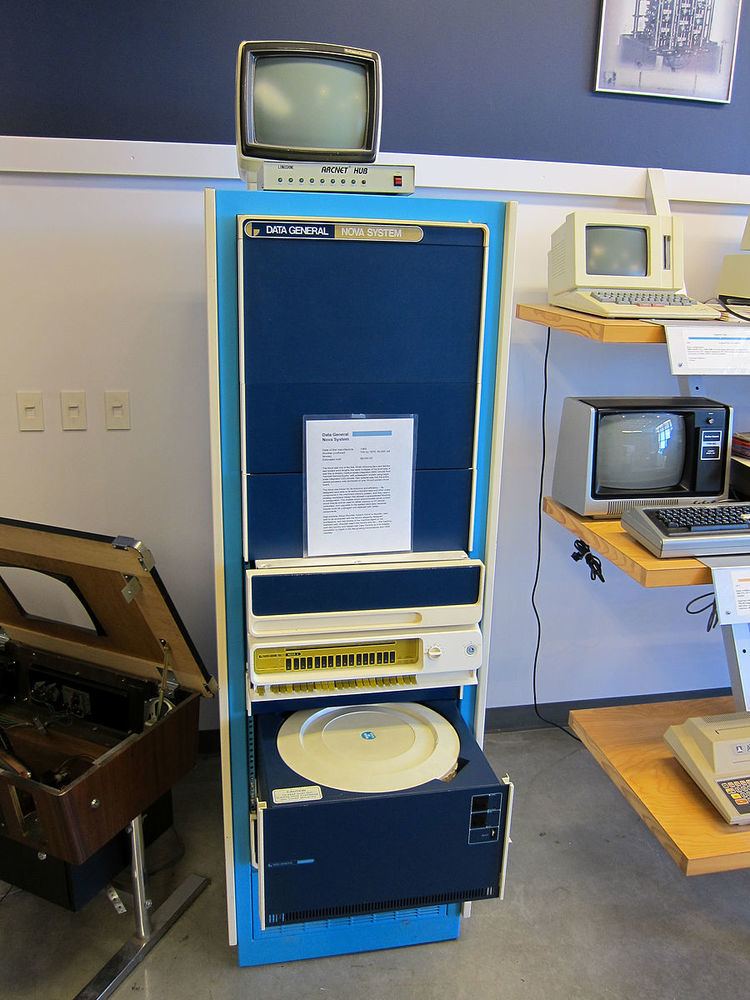 | ||
The Data General Nova was a popular 16-bit minicomputer released by the American company Data General in 1968. The Nova was packaged into a single rack mount case and had enough power to do most simple computing tasks. The Nova became popular in science laboratories around the world. It was succeeded by the Data General Eclipse, which was similar in most ways but added virtual memory support and other features required by modern operating systems.
Contents
History
Edson de Castro was the Product Manager at Digital Equipment Corporation (DEC) of their pioneering PDP-8, a 12-bit computer generally considered by most to be the first true minicomputer. De Castro was convinced that it was possible to improve upon the PDP-8 by building a 16-bit minicomputer with better performance and lower cost than the PDP-8. de Castro left DEC along with another hardware engineer, Richard Sogge, and a software engineer, Henry Burkhardt III, to found Data General (DG) in 1968. The fourth founder, Herbert Richman, had been a salesman for Fairchild Semiconductor and knew the others through his contacts with Digital Equipment.
In keeping with the original concept, the Nova was based on 15 by 15 inches (38 cm × 38 cm) printed circuit boards, The boards were designed so they could be connected together using a printed circuit backplane, with minimal manual wiring, allowing all the boards to be built in an automated fashion. This greatly reduced costs over the traditional wire-wrapping technique. The larger-board construction also made the Nova more reliable, which made it especially attractive for industrial or lab settings. Fairchild Semiconductor provided the new medium-scale integration (MSI) chips used throughout the system. The Nova was one of the first 16-bit minicomputers and was a leader in moving to word lengths that were multiples of the 8-bit byte in that market.
DG released the Nova in 1969 at a base price of US$3,995, advertising it as "the best small computer in the world." The basic model was not very useful out of the box, and adding RAM in the form of core memory typically brought the price up to $7,995. Starting in 1969, Data General shipped a total of 50,000 Novas at $8000 each. The Nova’s biggest competition was from the new DEC PDP-11 computer series, and to a lesser extent the older DEC PDP-8 systems. The Nova became popular in scientific and laboratory uses.
Performance
The Nova 1200 executed core memory access instructions (LDA and STA) in 2.55 microseconds (μs). Use of read only memory saved 0.4 μs. Accumulator instructions (ADD, SUB, COM, NEG, etc.) took 1.55 μs, MUL 2.55 μs, DIV 3.75 μs, ISZ 3.15-4.5 μs. On the later Eclipse MV/6000, LDA and STA took 0.44 μs, ADD, etc. took 0.33 μs, MUL 2.2 μs, DIV 3.19 μs, ISZ 1.32 μs, FAD 5.17 μs, FMMD 11.66 μs.
